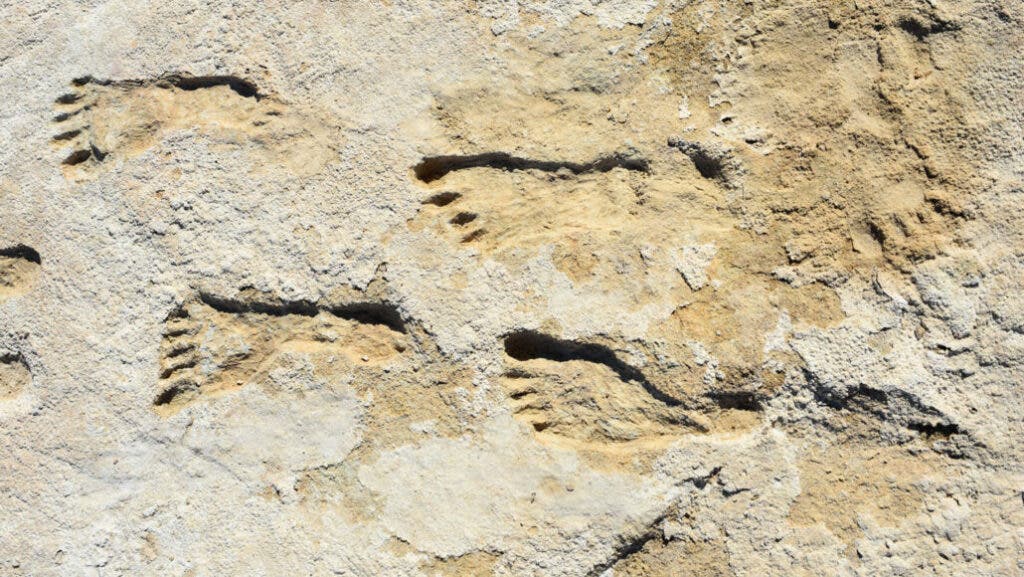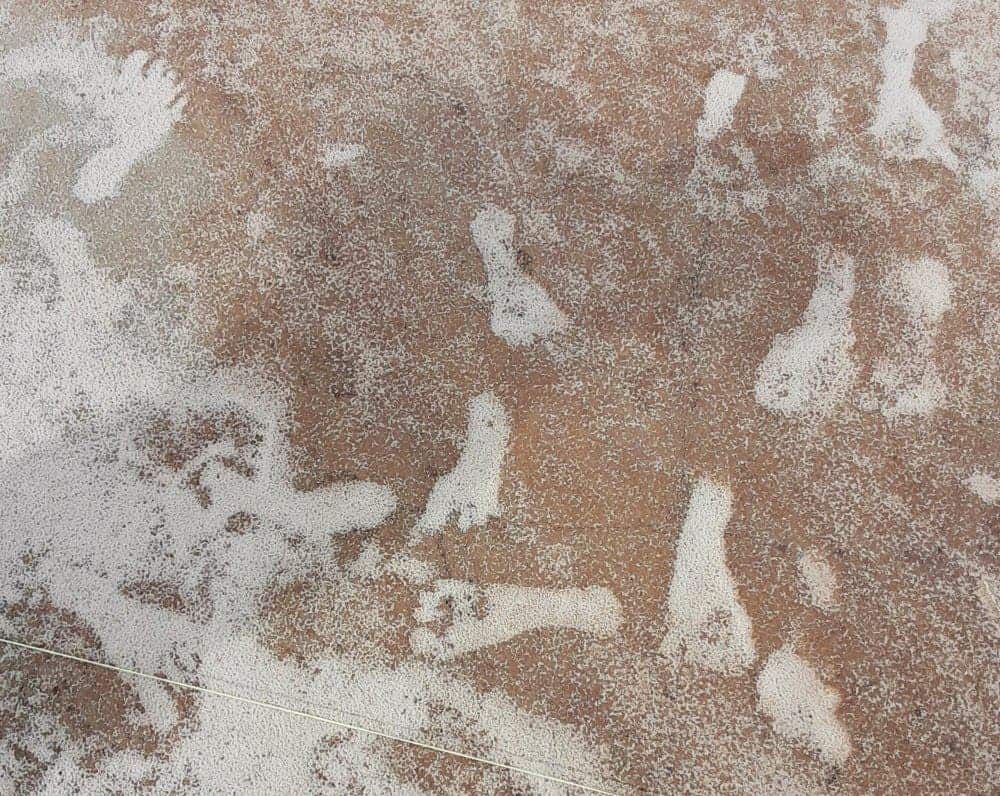
Scientists have found fossilized footprints in New Mexico dating back 23,000 years. The leading theory of how the Americas were first populated suggests that humans first set foot on the continents after the end of the “last glacial maximum”, no more than 16,000 years ago. This latest “unequivocal evidence”, as the scientists called it, shows that humans arrived much earlier in the Americas, likely before the start of the last ice age, perhaps as early as 30,000 years ago.
Americas: the final frontier
After the early humans migrated out of East Africa, likely in multiple waves, they quickly spread throughout Eurasia, reaching the southern coast of Asia and even all the way to Oceania by about 50,000 years ago. However, the Americas proved a hard nut to crack. It would take many thousands of years before humans finally set foot in North America, and then traveled south to Central and South America.
The earliest humans in the Americas likely originated from Central Asia. They crossed the Beringia land bridge, a now underwater vast plain where wooly mammoths and other animals once roamed. During the Last Glacial Maximum, which lasted from about 26,500 to 19,000 years ago, so much water was locked into ice that sea levels are supposed to have been even 120 meters lower than they are today. Islands became peninsulas and underwater plains became valleys and meadows. For a few thousand years, Siberia and Western Alaska were connected by one continuous expanse.
Humans, along with other fauna, took advantage of this opportunity and migrated to North America. Archaeological evidence, such as spearheads, suggest that people belonging to the Clovis culture, named after a town in New Mexico where the first such artifacts have been discovered, were among the first to settle the continent some 14,000 years ago.
However, other archaeological evidence found over the last two decades has cast doubt over the peopling of the Americas by Clovis people. For instance, excavations performed at a cave in Zacatecas, in central Mexico, by archaeologists led by Ciprian Ardelean from the Universidad Autónoma de Zacatecas led to the discovery of a treasure trove of stone tool artifacts, some as much 31,000 years old.
Another study published in Nature, led by Lorena Becerra-Valdivia, an archaeological scientist at the University of New South Wales and the University of Oxford, showed that by at least 15,000 years ago, the North American continent was already widely settled. Six Brazilian sites — five in the state of Piaui and the other one in Moto Grosso — are more than 20,000 years old. Clearly, humans must have migrated from Asia much earlier than that.
At the height of the last ice age, much of the northern parts of the continent were covered by huge barren ice sheets that would have made human migration from Asia into North America all but impossible. So any migration should have occurred either before or after this glacial episode that lasted nearly 20,000 years. New remarkable evidence found in New Mexico points to the former.
Barefoot in the park

For years, people have noticed that in particularly wet periods of the year at White Sands National Park in New Mexico, you could see footprints appearing as if out of nowhere on the ground. They would disappear again when the soil dried out, earning them the nickname “ghost tracks”.
In 2016, wildlife scientist David Bustos confirmed the phenomenon and that the tracks were left by humans — and their significance is even grander than anyone could have imagined.
In a new study published in the journal Science, archaeologists radiocarbon-dated ancient seeds found inside some of the fossilized footprints in a dry lake bed at White Sands, finding some are up to 23,000 years old. The seeds belong to an aquatic plant Ruppia cirrhosa, commonly known as ditchgrass, which thrived on the banks of the now dried-up lake.
Although the site where the prints have been found is now mostly a desert, when the prints were engraved White Sands looked very different, a lush wetland populated by mammoths, wild camels, cattle, and Stone Age humans.
These prints are carved into fine silt and clay, making them very fragile. Scientists took photos and then made 3D models in order to not disturb them.
Most of the human tracks appear to be those of teenagers and children, with adult footprints being less frequent. This suggests that the teenagers would be sent to the lake to do simple labor such as fetching water, firewood, and other resources, while the adults were involved in more skilled labor such as hunting. “Children accompany the teenagers, and collectively they leave a higher number of footprints,” the scientists mention in their study.
These footprints were found along with those of animals in multiple sediment layers spanning at least 2,000 years. This suggests that human presence in the area during the last glacial maximum was sustained rather than a single, one-off event by some isolated group of humans.
Scientists from White Sands National Park, the National Park Service, USGS, Bournemouth University, University of Arizona and Cornell University, in connection with the park’s Native American partners, have collaborated and consulted on this research.









